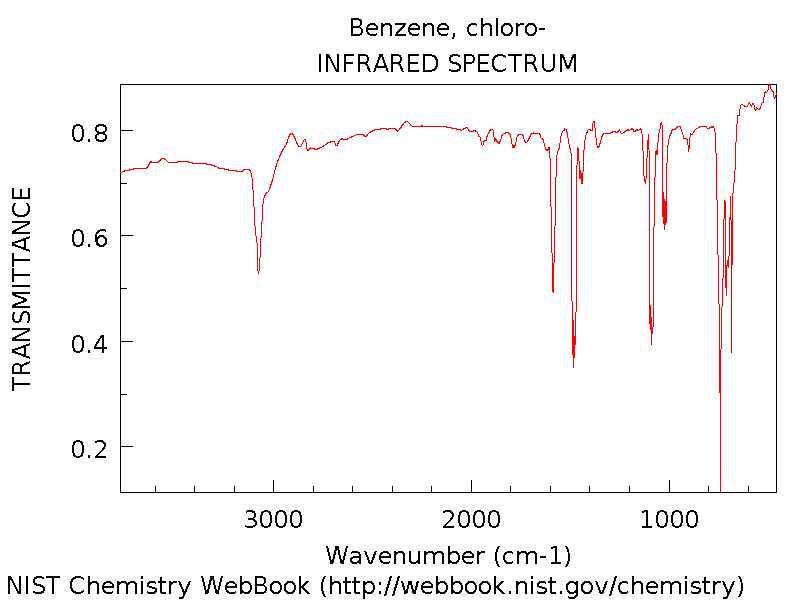|
|
| C6H5Cl Optimized Geometry |
According to these calculations, the best geometry for C6H5Cl has bond lengths of 1.81 Angstroms between the chlorine atom and its neighboring carbon, and 1.4 Angstroms between the other carbons.
Lit comparison: Experimental values3 were obtained of 1.7252 Angstroms between the chlorine atom and its neighboring carbon, and 1.4025 Angstroms between that carbon and the two connected to it. The distance between those carbons and the other carbons they are connected to was 1.3864 Angstroms, and 1.3987 Angstroms between the carbon opposite to the chlorine and the carbons connected to it. So the calculations differed only slightly from the experimental values, which is to be expected because the calculations are based on approximations, not exact values.
|
|
| C6H5Cl HOMO |

|
|
| Motion of C6H5Cl
at
861cm-1 |
Vibrational frequencies are the
frequencies at which a molecule
vibrates. In the presence of Infrared Radiation, the vibrations
can be
detected. The frequency of this motion is 861cm-1, and
corresponds
to the first peak on the right shown above4.
|
|
| Motion of C6H5Cl
at
1118cm-1 |
The frequency 1118cm-1
corresponds to the motion depicted on
the left, and corresponds to the peak4 that comes after
1000cm-1.
|
|
| Motion of C6H5Cl at 1637cm-1 |
The frequency 1637cm-1
corresponds to the motion depicted on
the right, and corresponds to the peak shown above4 at
around 1500cm-1.
|
|
| Motion of C6H5Cl at 1773cm-1 |
The frequency 1773cm-1
corresponds to the motion depicted on
the left, and corresponds to the peak shown above4 at around
1600cm-1.
|
|
| Motion of C6H5Cl at 3406cm-1 |
The frequency 3406cm-1
corresponds to the motion depicted on
the right, and corresponds to the peak large peak on the far left above4.
The
following two motions also correspond to that peak.
|
|
| Motion of C6H5Cl at 3428cm-1 |
The frequency 3428cm-1
corresponds to the motion depicted on
the left, and corresponds to the peak on the far left above4.
|
|
| Motion of C6H5Cl at 3431cm-1 |
The frequency 3431cm-1
corresponds to the motion depicted on
the right, and corresponds to the peak on the far left above4.